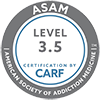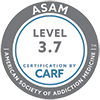Some fifteen years ago, when I was in middle school, I remember how alarmingly popular it was to “cut.” Cutting was the practice, usually carried out by girls, of making small, superficial but certainly painful cuts on the wrists, arms, or legs: all self-inflicted and usually secretive. A friend, parent, or teacher only noticed the wounds when the adolescent wore a bathing suit, forgot to put on an excessive amount of bracelets one morning, or was spotted with cuts or bruises while changing in the locker room for gym class.
Correlation between Self Harm and Addiction
We were told in health class that cutting was a form of self-harm. Some people engaged in hitting, slapping, pinching, or even burning themselves on parts of their bodies that could be later hidden from plain sight.
Now, in 2022, the practice of self-harm is still alive and well, and the connections of self-harm to substance abuse and addiction are clear. Studies have shown that adolescents who self-harm are more at risk for addiction as adults and that individuals who engage in self-harm practices while under the influence are at risk of serious injury.
What Is Self-Harm?
As a regular practice, self-harm is not intended to be fatal. Essentially, it’s when someone uses a practice like cutting or burning as a way to cope with a mental health disorder or trauma. Dr. Kristen Fuller, in a Psychology Today article, explains the more well-documented pathology behind the phenomenon.
- Some people need to feel pain to feel something
Emotional numbness, the absence of all emotion, can be a scary feeling, especially for a person who has suffered from trauma or abuse. For many people, physical pain acts as an alarm going off to wake up from a numbing nightmare. - People feel the need to punish themselves
This next motive usually applies to people dealing with low self-esteem or feelings of
guilt. These feelings can also be tied to other mental illnesses that individuals haven’t yet learned to control. Pain can offer them a fleeting feeling of redemption. - People need a distraction from whatever difficult emotion they’re dealing with
Just like people need to feel something, others need to stop feeling. At times, feelings of sadness, grief, loneliness, rage, or general negativity can be overwhelming. Inflicting pain on someone’s body can offer a short reprieve from these emotions.
Who Self-Harms?
People tend to think that only young teenage girls engage in self-harm. However, that’s not always the case. Many health professionals see all types of adolescent boys and girls self-harming, as well as people well into their 30’s who can’t seem to quit the behavior.
Are People Who Self-Harm More Likely to Abuse Substances?
Absolutely. Self-harm and substance abuse are closely related. It makes sense, given that substance abuse is also a coping mechanism for dealing with emotional pain. There is a connection between self-harm and substance abuse, although it’s important to note that not everyone who self-harms will also abuse substances, and vice versa. The relationship between these behaviors can be complex and multifaceted. Both behaviors can be indicators of underlying emotional distress and mental health issues, and addressing these underlying issues is crucial.
- Coping Mechanisms: Both self-harm and substance abuse can be seen as coping mechanisms for individuals dealing with overwhelming emotional or psychological pain. In some cases, individuals may use substances to numb emotional pain, while others may turn to self-harm as a way to release emotional tension.
- Co-Occurrence of Mental Health Issues: Both self-harm and substance abuse are associated with various mental health issues, including depression, anxiety, borderline personality disorder, and trauma-related conditions. These underlying mental health conditions can contribute to the presence of both behaviors.
- Need for Comprehensive Treatment: When individuals engage in self-harm and substance abuse, it’s crucial to address both issues simultaneously and to recognize the underlying emotional and psychological factors contributing to these behaviors. Comprehensive treatment should include therapy, counseling, and support to help individuals develop healthier coping strategies.
- Diverse Experiences: It’s important to remember that people who self-harm and people who abuse substances are not a homogenous group. Their experiences, motivations, and outcomes can vary widely, and treatment should be tailored to individual needs.
This March, the month dedicated to self-injury awareness, don’t hesitate to contact us here at St. Gregory’s with questions and concerns about self-harming and addictive behaviors in yourself or a loved one. It’s never too late to heal.







